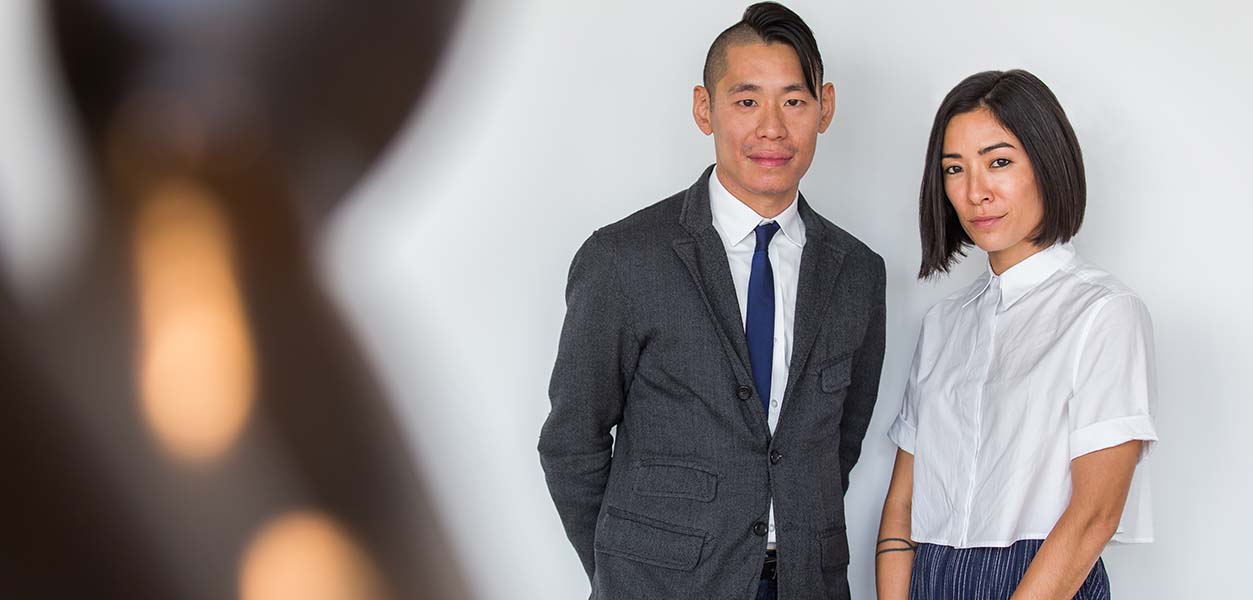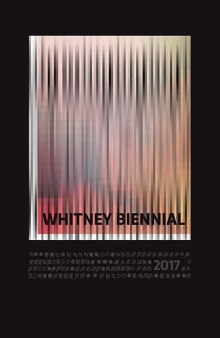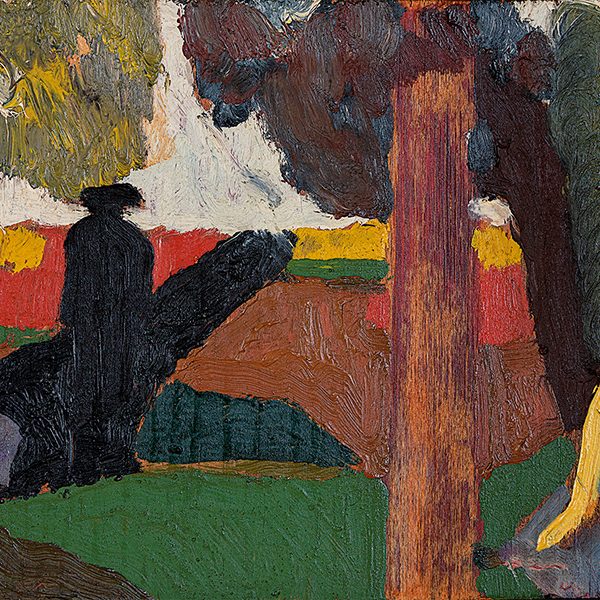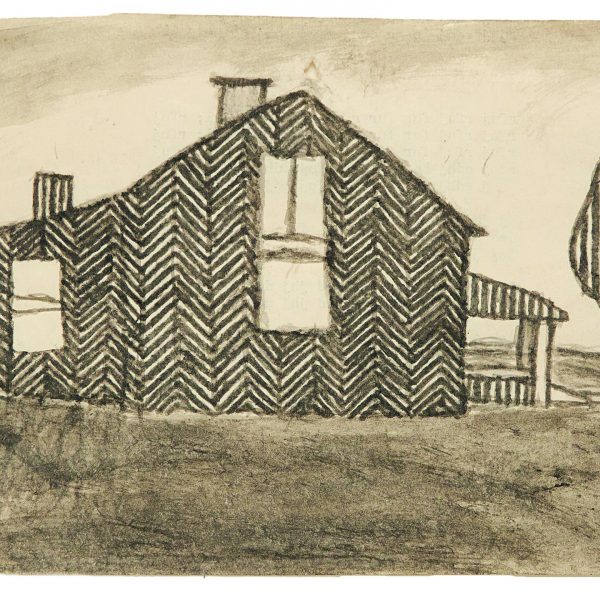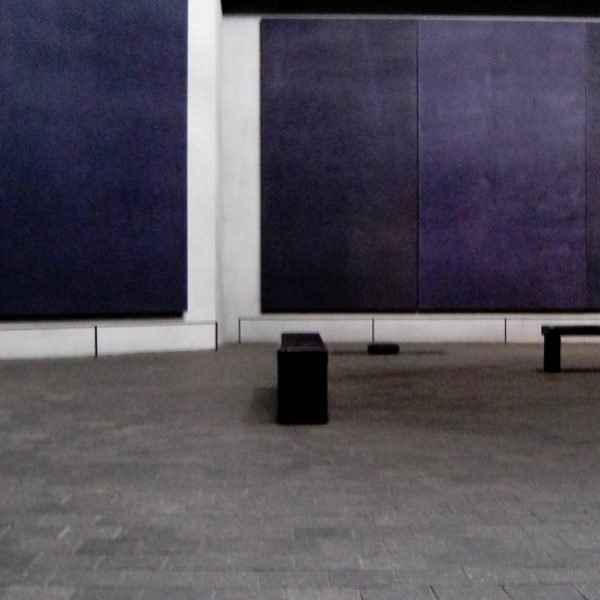“Beauty and the Bologna: the 2017 Whitney Biennial” Interview with the curators Christopher Y. Lew and Mia Locks by David Ebony
David Ebony–
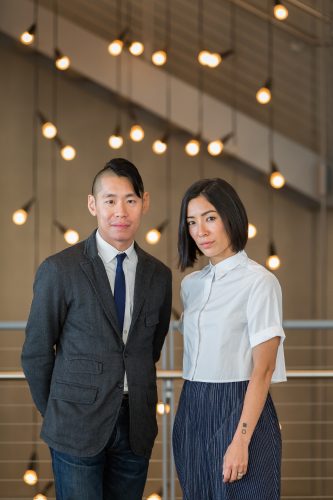
Christopher Y. Lew and Mia Locks © 2016 Scott Rudd
www.scottruddevents.com
This year’s Whitney Biennial, on view through June 11, is an extraordinary exhibition for a number of reasons. Widely regarded as the premier museum survey of contemporary art in the U.S., the Biennial, now in its 78th incarnation, is the first to take place in the Whitney’s new Renzo Piano-designed building situated along the Hudson River in Manhattan’s Meatpacking District. The critically acclaimed structure, which debuted May 1, 2015, has proven to be a popular destination for tourists, art-lovers, the culture curious, and for this show, just about everyone interested in the latest trends in art. There are always risks involved in trying to define art of the present, especially in terms of an exhibition, and this year, the curators as well as museum officials and staff, were obviously under enormous pressure to make this Biennial sing. Sing it does, as well as scream and shout.
It may be interesting to note that the Biennial’s debut, March 17, coincided with the opening of the Disney blockbuster, Beauty and the Beast. Despite the obvious differences in audience appeal, and the Biennial’s goal to transcend mere entertainment, there are certain parallels to be considered with regard to these ambitious cultural enterprises. Both are big-budget, high-profile extravaganzas aimed at reviving and re-energizing a venerable institution. Like the film, the Biennial’s vitality on some level stems from a sustained tension between notions of rarefied beauty and the blatantly grotesque. Both projects feature live-action/CGI hybrids; and both met with great acclaim and heated controversy from the outset. The introduction of a gay character in the movie incited international rancor, and in the Biennial, at least one work has ignited anger, outrage, and organized protests, to be further discussed below.
In tandem with the building’s youth, the show’s organizers, Whitney associate curator Christopher Y. Lew, 36, and independent curator Mia Locks, 34, are the youngest Biennial curators ever. Street smart and provocative, yet art-historically savvy, the exhibition, however, hardly feels unrefined or sophomoric. At one of the show’s packed previews, where I first met the curators, they appeared cool, calm, and confident, apparently enjoying the limelight.
Locks and Lew selected works in a great variety of mediums, that range from the sumptuously appealing to the aggressively repellent. In the former camp are works such as Carrie Moyer’s ethereal abstract paintings featuring overlapping translucent layers of color, and subtle spatial shifts, as in Glimmer Glass; and Raúl De Nieves’s shimmering stained-glass (actually multicolored acetate) windows. The show’s other highlights include Lyle Ashton Harris’s multimedia environment, constituting an enthralling autobiography. The immersive four-channel video by the artist team Postcommodity, shot on the U.S.-Mexico border, suggests a dizzying rebuttal to demands for a wall. Ajay Kurian’s strangely elegant life-like hooded and masked figures haunt the museum stairwell, while Anicka Yi’s stunning 3-D video The Flavor Genome explores scientific experiments in terms of an ode to nature. Larry Bell’s series of large, translucent red-glass cubes, Pacific Red II, arranged outdoors on one of the museum terraces, lends an almost classical dignity to the proceedings.
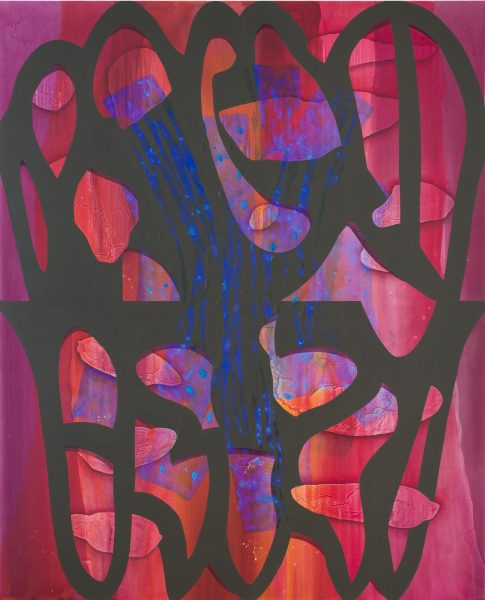
Carrie Moyer, Glimmer Glass, 2016. Acrylic and glitter on canvas, 96 x 78 in. (243.8 x 198.1 cm). Collection of the artist; courtesy DC Moore Gallery, New York.
Among the intentionally gut-wrenching offerings would be Claim, William Pope.L’s room-size installation of Pepto-Bismol pink walls lined with slices of real bologna, each emblazoned with a decomposing painted portrait. The entire riveting work appears as an elaborate joke—pertinent to today’s “fake news” environment—about how biased statistical analysis amounts to a bunch of baloney. Even more unsettling, Jordan Wolfson’s 90-second virtual reality work Real violence places each viewer in a VR headset and then into the unenviable position of being the sole witness to a heinous crime—a brutal street assault, a savage beating in broad daylight, an apparent murder. Adjacent to the bank of headsets, Asad Raza’s installation, Root sequence, Mother tongue, with its calming grove of flowering trees, helps the reviewer recover from the horrific experience that Wolfson proffers.
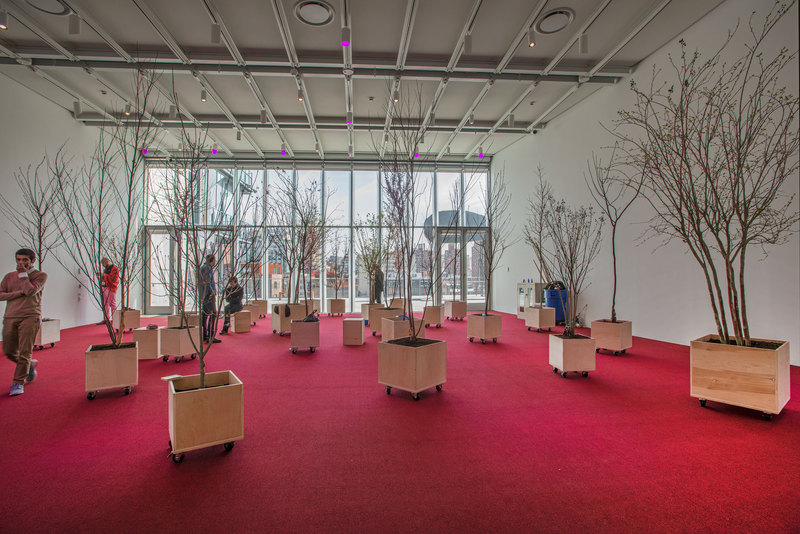
Asad Raza Installation view Root sequence. Mother tongue, 2017. 26 Trees, UV lighting, customized scents, carpet, cabinet with possessions of caretakers. Collection of the assembled. Photograph Bill Orcutt.
Due to the spaciousness of the Whitney’s new home, each of the sixty-three artists in the Biennial is given a fair amount of breathing room to make a statement. Compared with the previous Biennial in 2014, which included works by 103 artists, this year’s exhibition often appears as a sequence of solo shows. Most of the works on view were selected during the course of last year’s tumultuous U.S. presidential campaign, but before the outcome was known. Issues of economic disparity, urban violence, immigration, the environment, racism, sexism, and homophobia permeate the exhibition. But the curators generally avoid a pedantic stance. Their strategy makes the works seem fresh and relevant, and offers some helpful means of grappling with the nation’s post-election blues, if not its current radical right-wing directives.
Compared with the Whitney Biennials of recent years, this show is remarkably painter-friendly. Abstract and figurative canvases are featured throughout, as well as several sculpture-painting hybrids, such as John Riepenhoff’s painting supports made of bisected half-mannequins (from the waist down); and the fluid, quasi-abstract imagery in the large, ceiling-suspended constructions by the artist team known as KAYA. Outstanding among the figurative works are Celeste Dupuy-Spencer’s ironic slice-of-life Americana scenes, including a Trump rally; and Henry Taylor’s imposing compositions exploring the African-American experience. One of Taylor’s works, THE TIMES THEY AIN’T A CHANGING FAST ENOUGH!, depicts a scene cribbed from the nightly news, in which Philando Castile, a black man in the front seat of a car, has just been shot by a white police officer, an image that Castile’s girlfriend captured on her cell phone.
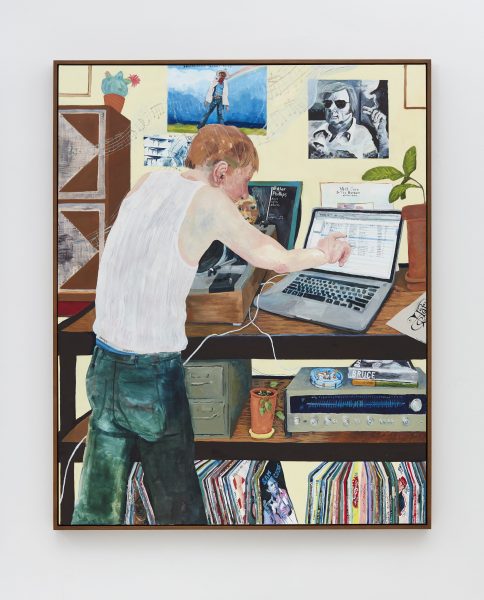
Celeste Dupuy-Spencer, Fall with Me for a Million Days (My Sweet Waterfall), 2016. Oil on canvas, 60 x 48 in. (152.4 x 121.9 cm). Private collection; courtesy the artist and Mier Gallery, Los Angeles.
Another photo-based image of a black victim of white aggressors, Open Casket, one of three Dana Shutz paintings included in the show, describes in a quasi-abstract visual language the brutal beating and murder of Mississippi teenager Emmett Till, in 1955. The work triggered actions inside the museum by protesters, beginning on the Biennial’s opening day. African-American artist Parker Bright alternately blocked views of the artwork, and engaged museum goers with discussions about it. According to the New York Times, the British-born, Berlin-based artist and writer Hannah Black called for the work to be removed from the show, and also destroyed. The objection centers on the question of whether Schutz, as a successful white artist, should have the privilege to speak for black people. The protesters accused her of aestheticizing an atrocity for personal gain. Defending herself in the Times, Schultz said that she approached the image from a mother’s point of view, and wished to convey the mother’s pain. She also indicated that the work would never be sold.
As the initial responses to the exhibition have settled a bit, and the show’s triumphs and shortfalls have been widely assessed by critics, I spoke with the curators on the phone to discuss the exhibition, the controversy, and their thoughts about their curatorial accomplishment.
David Ebony Congratulations to you both. I think this Whitney Biennial is one of the strongest and engaging I have seen—and I’ve seen quite a few of them. You deal with many hot-button issues in the exhibition; there are several works here that I thought would spark controversy, or even outrage—the Jordan Wolfson piece, for one. I was a bit surprised that the Dana Schutz painting would wind up at the center of the most heated debate. What are your thoughts about that?
Mia Locks There are many thoughts, many ways to go with this. One of the important things to remember is that there are no perfect artworks. There should be no absolute rights and wrongs. I think we should be able to disagree, even vehemently disagree. We can and should have these conversations about an artwork and the issues it raises. We need to keep this conversation going. We shouldn’t allow differences to scare us. But any attempt to shut down the conversation is an affront to the belief in art. It’s a dangerous and slippery slope. That said, I want to acknowledge that the Dana Schutz work is triggering for some people. But I think this work can exist, and so can opposition to it. As curators, we believe in art’s ability to raise these kinds of difficult questions through the context of the exhibition, and through other artworks and related ideas in the show.
Christopher Y. Lew We know that Dana was approaching the work from a deeply sympathetic starting point, as a mother, the viewpoint of the boy’s mother. She was thinking about the experience of motherhood. We were considering the piece in the context of the larger show, as part of the matrix of the exhibition. It was consciously set within a show that deals with American history, violence, deep tragedy, and murder. We thought that the work presents something that is not only a black problem, or a white problem, but a very American problem—a situation and condition that we all have to grapple with as Americans. We all have different experiences with these issues, but we need to keep the dialogue about them open.
Ebony In any case, with your own heritage, racial mix and ethic backgrounds [as Asian-Americans], you wouldn’t or couldn’t have chosen these works, or approached the show from a white person’s perspective, could you?
Locks I’m always reluctant to emphasize my autobiography in any way, but I do have to say that my life experience is bi-racial. My whole life has been about not being one thing or another. It just so happens that we are in a moment when there is an urge or impulse to jump to polarized positions. Unfortunately, some of these polarized positions are real. But identity is complex, not one thing or another. And art provides a space where we don’t have to be in an absolutist position, and we can challenge ourselves to think together.
Lew I see it along the lines that I wrote about in the exhibition catalogue. There is a shared history—both good and bad—that we all should confront as Americans. And I do believe there are ideals in the country that are still to be valued if we are to come together and move forward.
Ebony While reading your essay, Chris, I have to say it was the first time I ever laughed out loud while reading a Biennial catalogue. I think your core equation of RuPaul, Walt Whitman, and Ralph Waldo Emerson is really extraordinary—and poignant. Can you say more about your essay, and how you arrived at that trio?
Lew My wife is a huge fan of RuPaul’s Drag Race, and she has friends over watching it every week. When the show was coming together, and we focused on issues of identity, or how one can define oneself in the U.S. today, I realized that on the TV show, RuPaul was using these tropes and traditions that have been long-standing in the country and culture. They tie in with the work of certain figures like Emerson and Whitman, who helped define America and American identity. In some way, the three of them define a certain sense of Americanness today.
Ebony Mia, in your catalogue statements, you talk about how you deliberately set out to be inclusive, with goals in mind such as highlighting the works of a number of immigrant artists, yet you also consciously avoided a didactic approach to putting the show together. I think that’s one of its unique strengths. Can you say more about that?
Locks I think one of the things to remember is that identity and subjectivity are really open-ended questions. What strikes me most about this moment is that the energy is elevated; there is greater attention to many of these issues, not just post-election, but since the time of the presidential debates. Important questions have emerged especially about the politics and ethics of representation. At the same time, we have social media platforms where people are trying to express themselves, and participate in the discourse in some way. The exhibition is an opportunity to let the artworks speak. Artists are thinking across lines to address some of these issues, and in the process new and provocative questions arise.
Ebony Speaking of specific provocative artworks, I would like to know more about the Jordan Wolfson virtual reality work, Real violence. Was that an existing piece, or was it created especially for the Biennial?
Lew He proposed it to us when we were in conversations with him. He said he had this specific piece in mind; knowing the kind of divisiveness in the country about how to deal with acts of violence, and the legacy of violence we’ve been facing, it seemed that it would make a powerful statement within the exhibition.
Ebony And during the course of the show, will those slices of bologna just disintegrate in Claim, William Pole.L.’s installation?
Locks Bologna is so highly processed it will just kind of dry up; it won’t actually rot or get moldy, or anything like that. It doesn’t decompose in the way you might imagine.
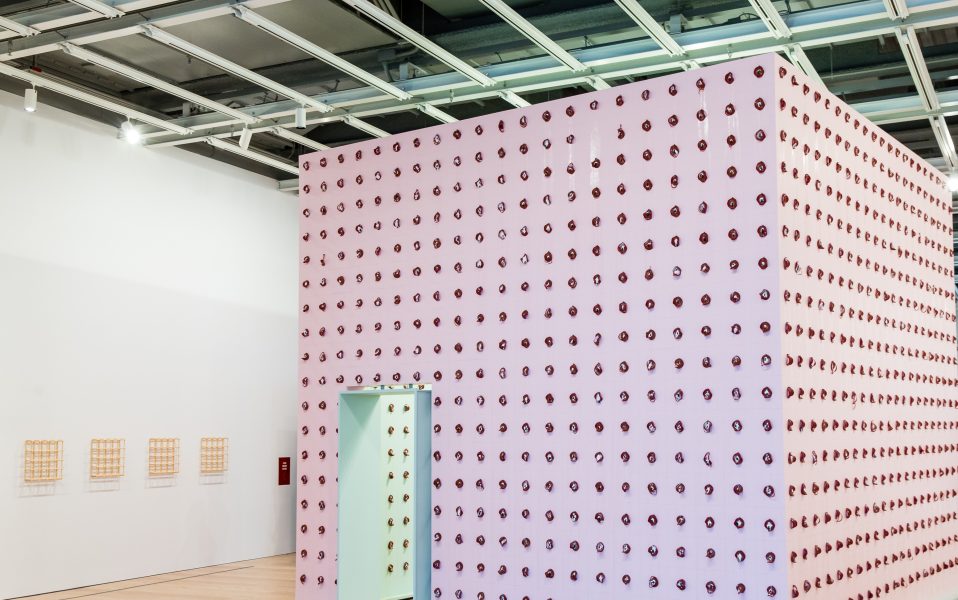
Installation view of Pope.L aka William Pope.L, Claim (Whitney Version), 2017. Whitney Biennial 2017, Whitney Museum of American Art, New York, March 17-June 11, 2017. Collection of the artist; courtesy Mitchell-Innes & Nash, New York. Photograph by Matthew Carasella.
David Ebony is currently a Contributing Editor of Art in America magazine. Among his books are Arne Svenson: The Neighbors (2015); Anselm Reyle: Mystic Silver (2012); Carlo Maria Mariani in the 21st Century (2011); Emily Mason (2006); Botero: Abu Ghraib (2006); Craigie Horsfield: Relation (2005); and Graham Sutherland: A Retrospective (1998). He lives and works in New York City.























